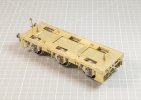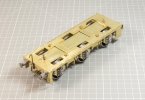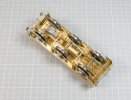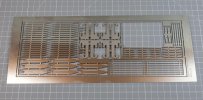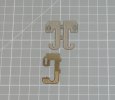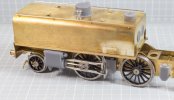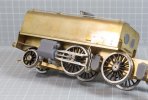Peter, I'll not misguide you, it's not easy.
It might be easier in 4 mm as you're dealing with a smaller area but in 7 mm it can be a faff. The Duke has half etched footplates with rivets on top, this makes it hard to use a former as the raised rivets create stress points in the material. you could coat your formers in tape or thin flexible material so the the raised rivets sink in and you form the actual base material. Curves on the underside are easier as you have a smooth surface that sits flat on the former.
I did one top bend with a former and it creased the footplate around the rivets, luckily I over bent it, so when flattening it out most of the creases.......became less obvious

It took quite a while to dress the rest out to give a nice flat finish. All of the other bends were done with Mk I fingers and thumbs bit at a time. Probably took two near three hours to get the whole footplate where I wanted it to be.
If I have another Duke to do in the future then I'll not use the kit footplate, I'll etch a new one up that is full thickness with half etched rivet idents on the underside, that way both top and bottom can be shaped over formers and then the rivets punched out afterward. That'd also allow you to etch little pockets for the steps where the footplate rises over the coupling rod bosses; it'd make it easier to hold them in place whilst fixing. You could add a peg to the rear riser and a corresponding hole in the slot for a more secure fixing, allowing them to be soldered from below and remove the need for cleaning up above.
I'd also add a longitudinal slot to locate the outer frames in, either one long slot or several short ones, currently there's nothing to stop it wandering in and out other than squinting down it to make sure it's straight. The slot isn't essential, just saves time, more an enthusiasm feature than a must have.
MD












 . I've been under orders from the Present Mrs T for the last few days.
. I've been under orders from the Present Mrs T for the last few days.
 It took quite a while to dress the rest out to give a nice flat finish. All of the other bends were done with Mk I fingers and thumbs bit at a time. Probably took two near three hours to get the whole footplate where I wanted it to be.
It took quite a while to dress the rest out to give a nice flat finish. All of the other bends were done with Mk I fingers and thumbs bit at a time. Probably took two near three hours to get the whole footplate where I wanted it to be.


